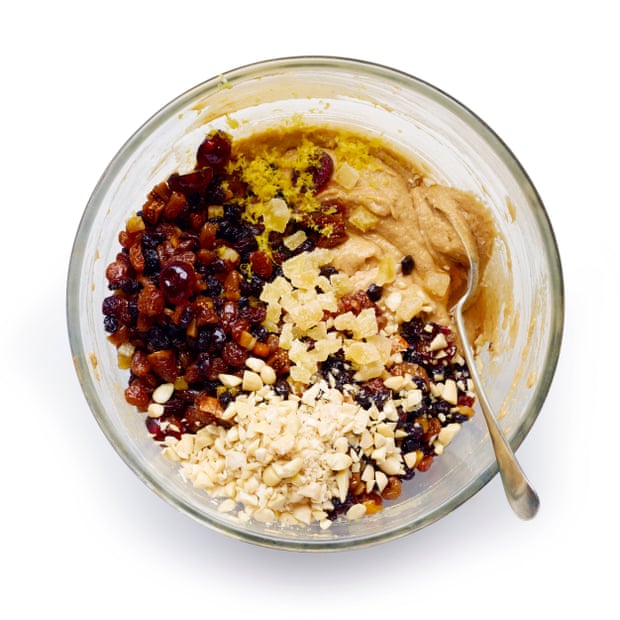1 Mix and match
A note about ingredients: those listed are my preferred mix of dried fruit and nuts, but fruitcake is a very personal thing, so feel free to substitute your own blend –sour cherries or cranberries instead of glace fruit; chopped dates or apricots instead of figs; a simple bag of supermarket mixed fruit – so long as you keep the total weight the same.
2 The trick to a moist cake
Many people claim they don’t like fruitcake because it’s dry. Avoid this by soaking the dried fruit and peel in either whisky (or cold tea or fruit juice, if you’d prefer to keep your cake teetotal). Cover and leave to steep for six to 12 hours – I usually do this the night before I’m planning to bake.
3 Be protective
Grease and line a 20cm springform cake tin with two layers of baking paper: this may seem unnecessarily fiddly, but it will prevent the outer layers from burning – very handy when you’re baking with dried fruit, which has a tendency to catch and become very bitter where it sticks out from the sides of the cake.
4 Get creaming
Put the butter and sugar in a large bowl and cream together until very light and fluffy; I’d recommend using electric beaters for at least five minutes until it has significantly increased in volume. Gradually add the eggs, beating well between each addition so the mix doesn’t curdle.
5 Add the spices
Sift the flour into another large bowl, then whisk in the baking powder, spice, ground almonds and a pinch of salt. If you’re not a fan of mixed spice, or don’t have it to hand, you can substitute vanilla extract or other sweet spices, though bear in mind that the likes of nutmeg and cardamom are very strong, so go easy with them.
6 Mix together
Fold these dry ingredients into the butter and sugar mixture, along with the soaked fruits and any remaining soaking liquid, lemon zest, chopped almonds (again, use other nuts or leave them out if you prefer) and ginger, if using. You can leave it out if you like, but it does give the cake a lovely burst of heat.

No comments:
Post a Comment